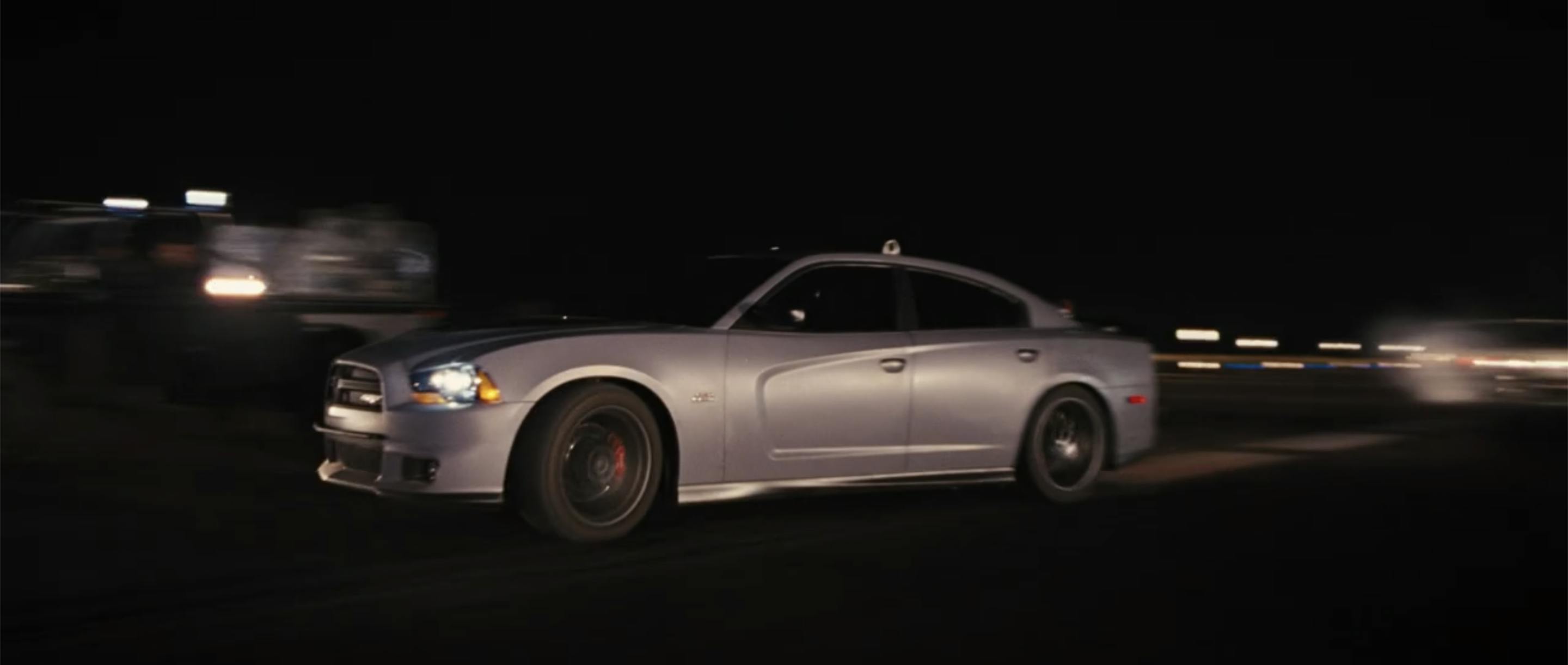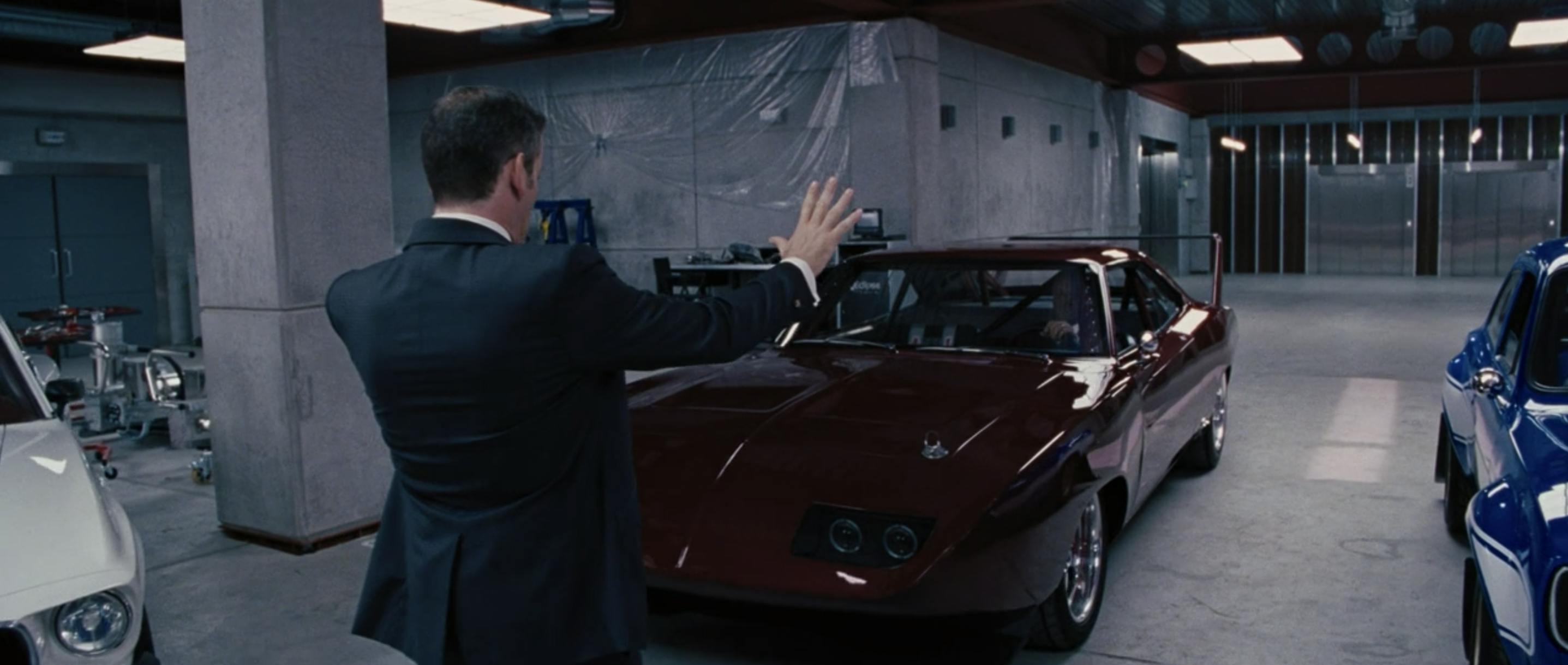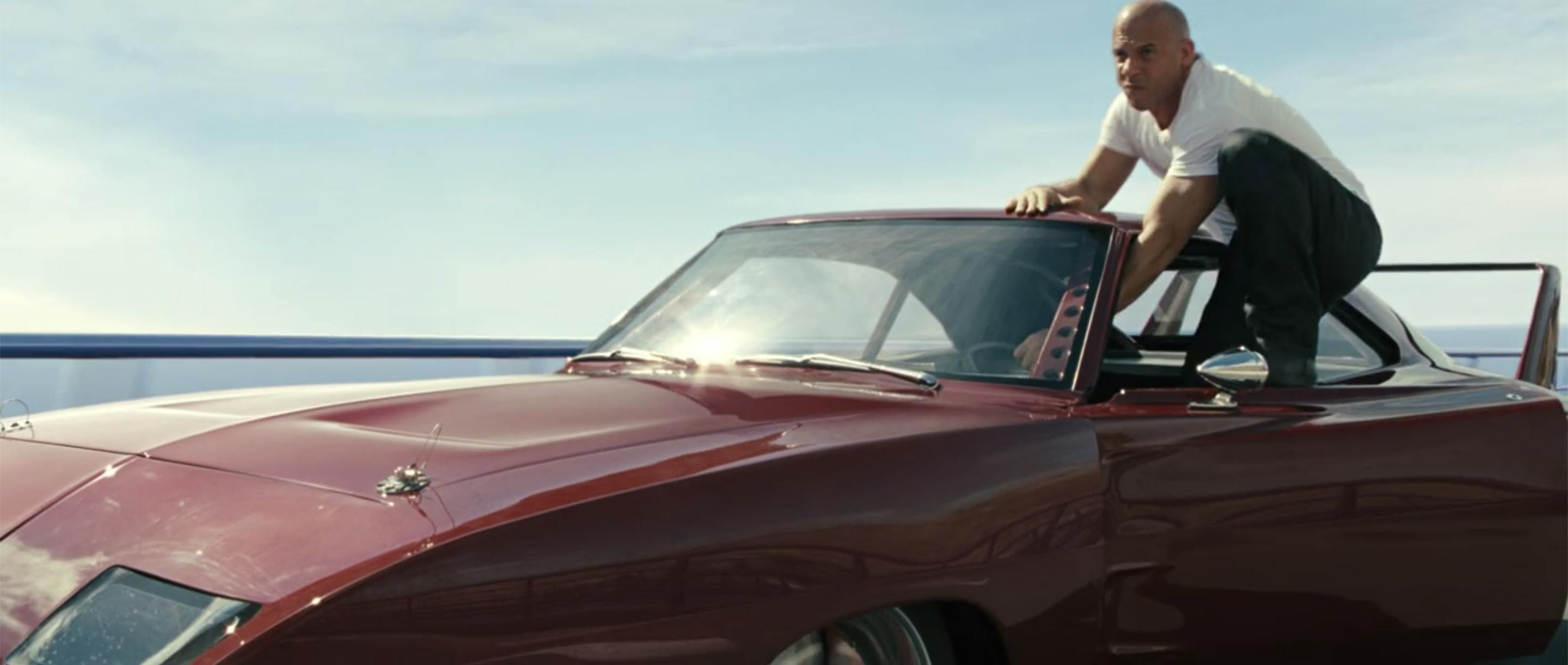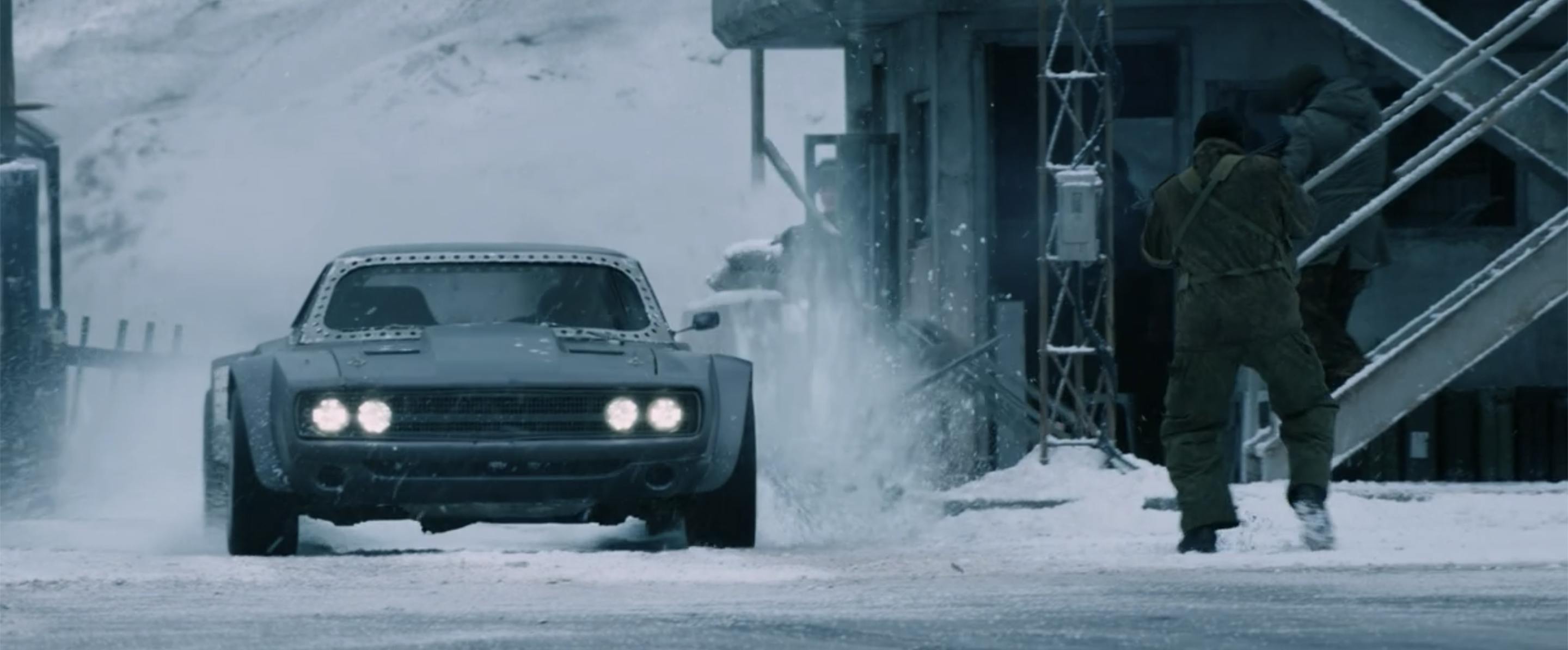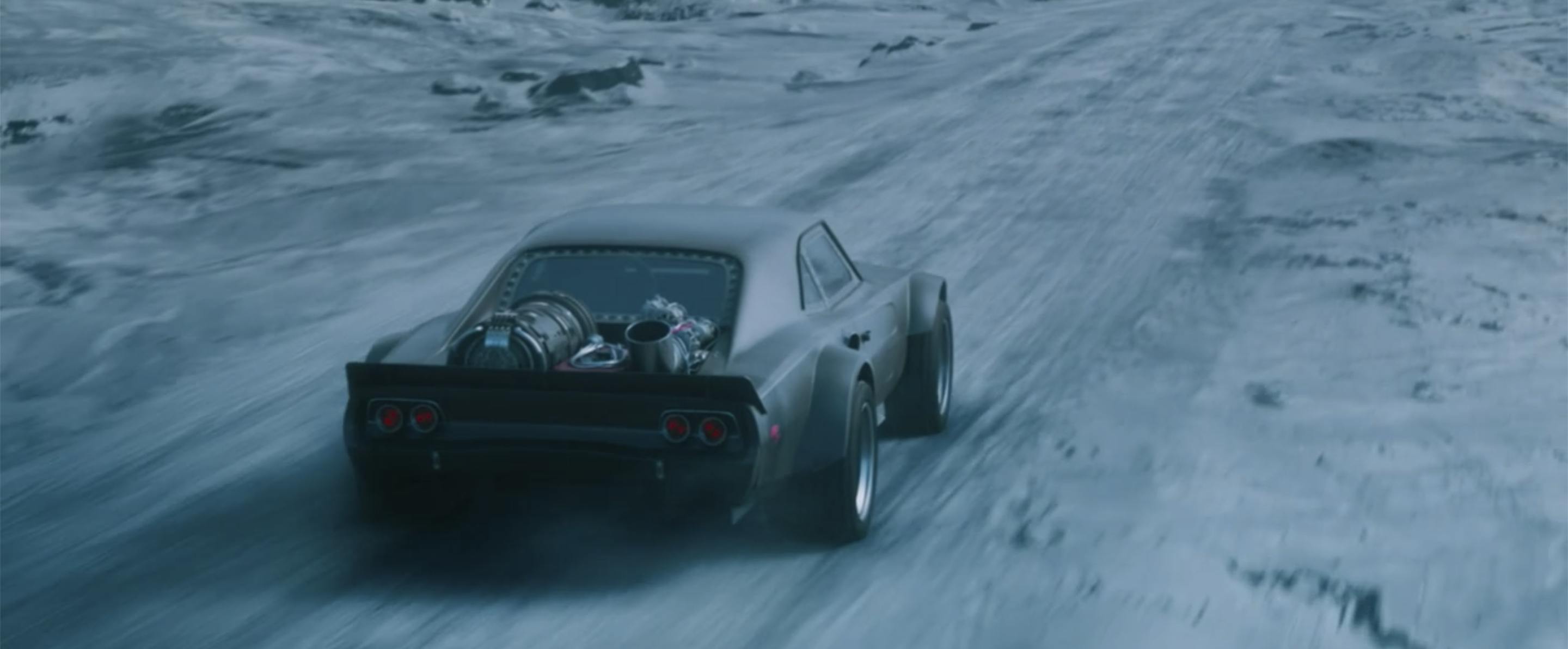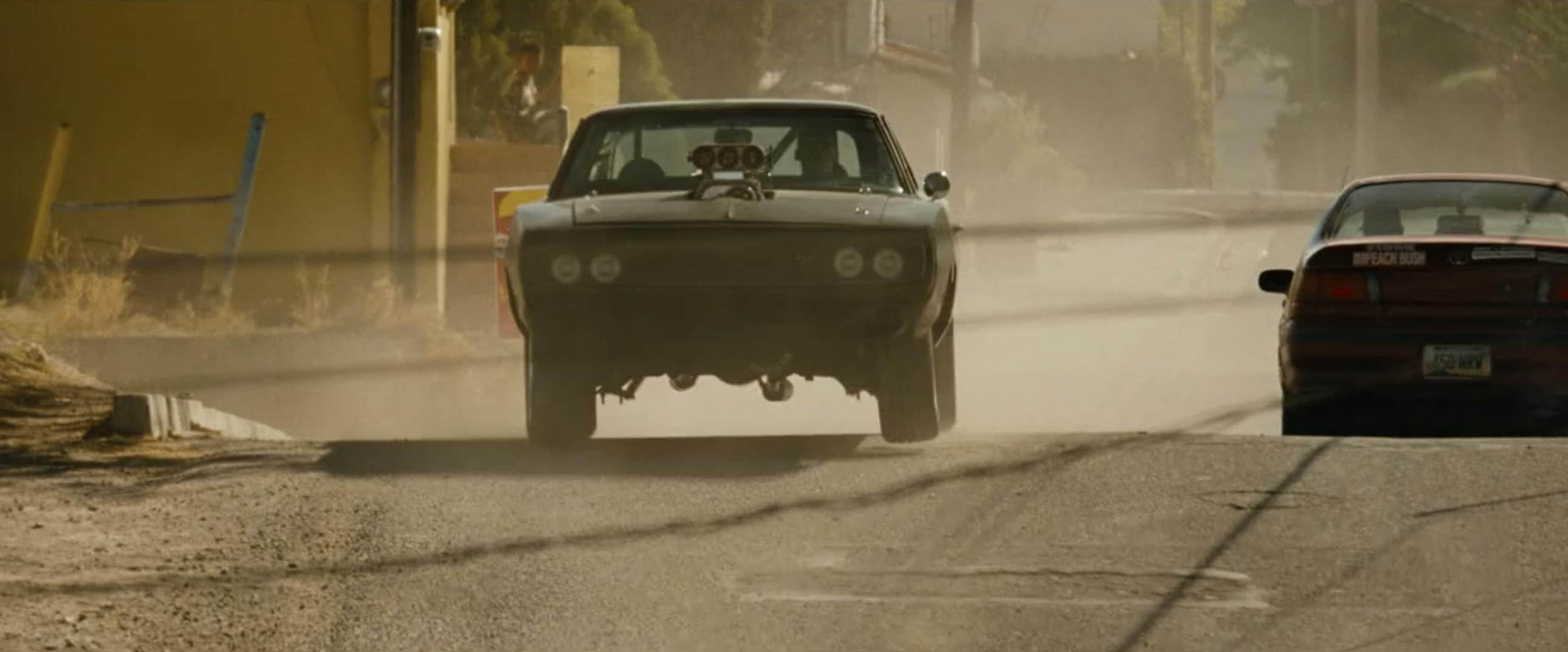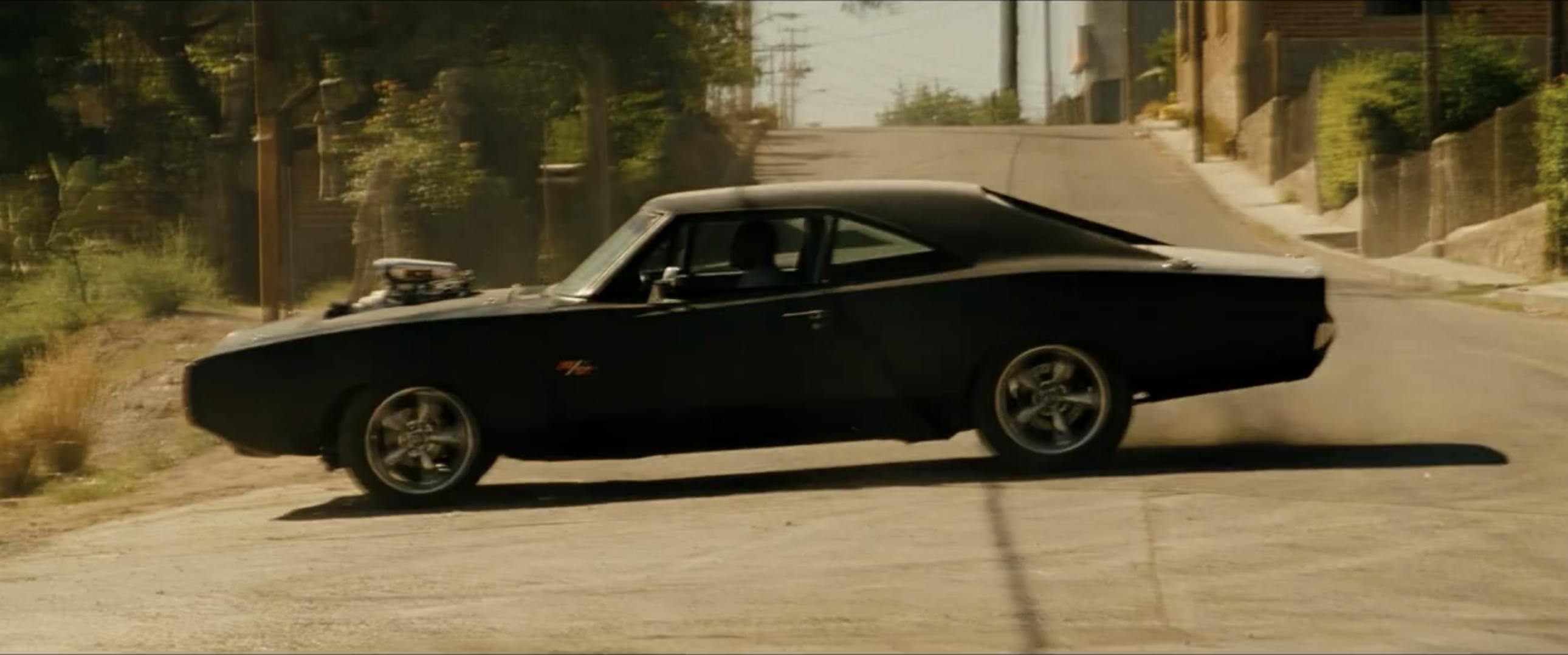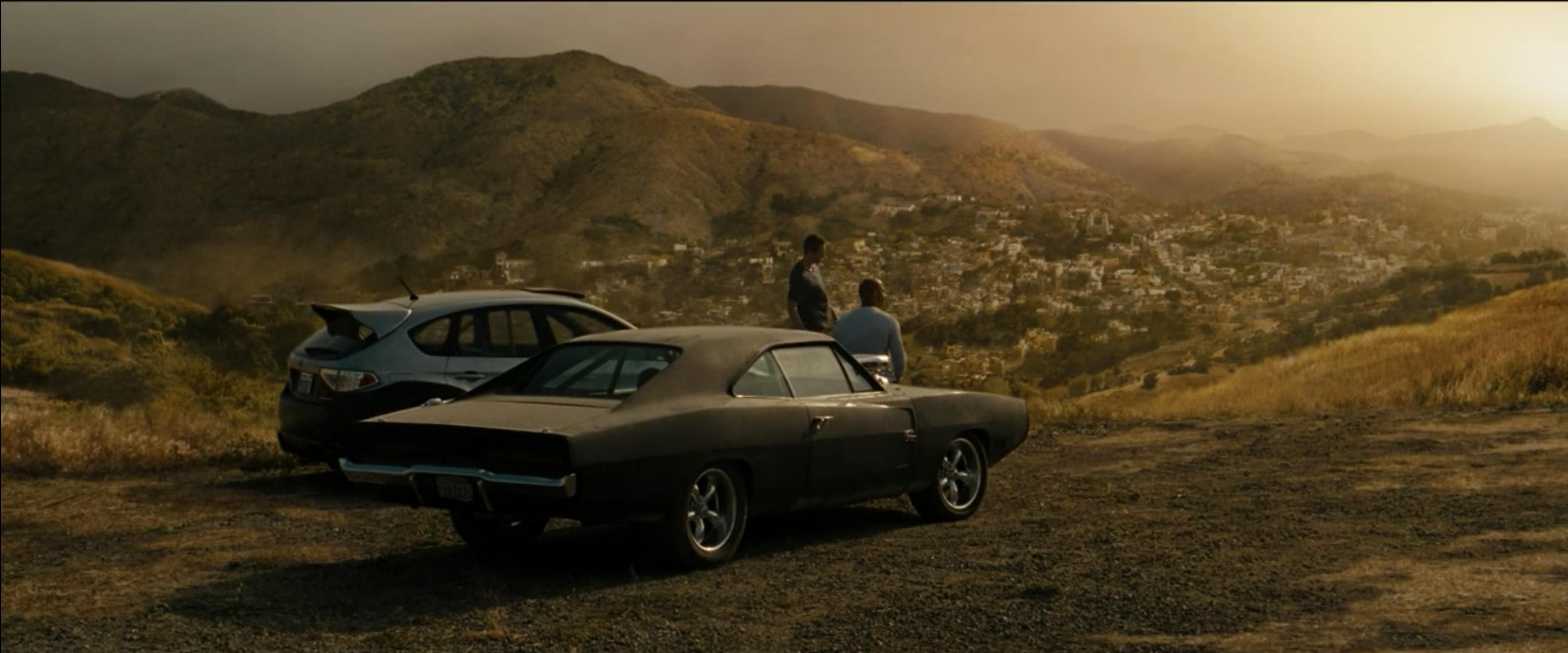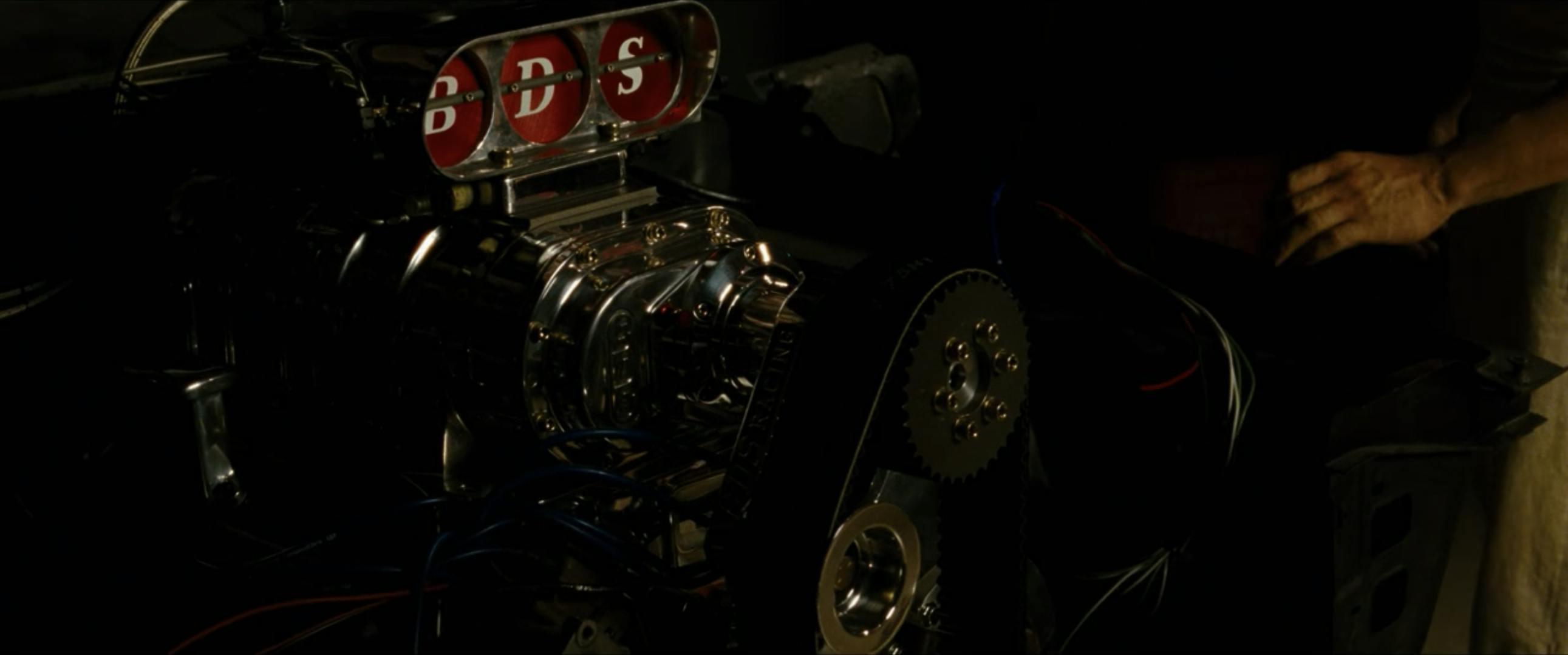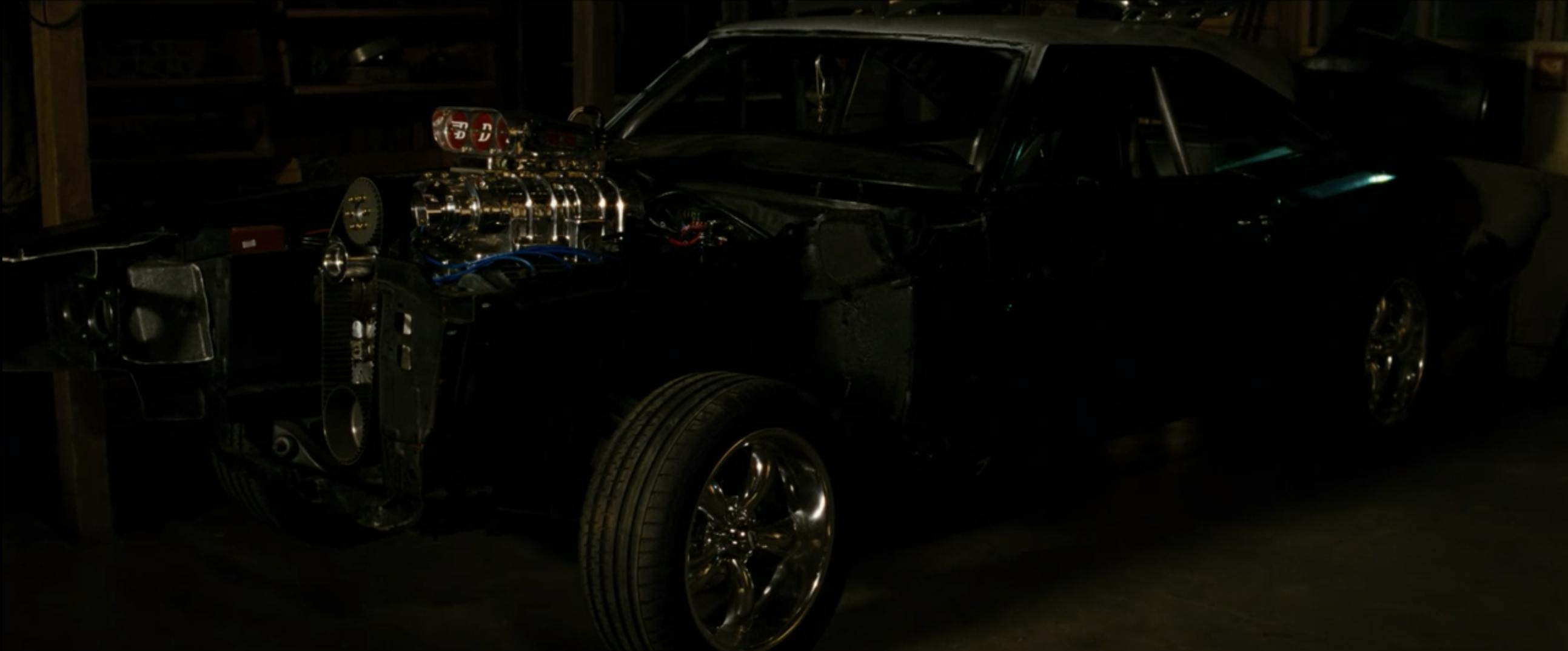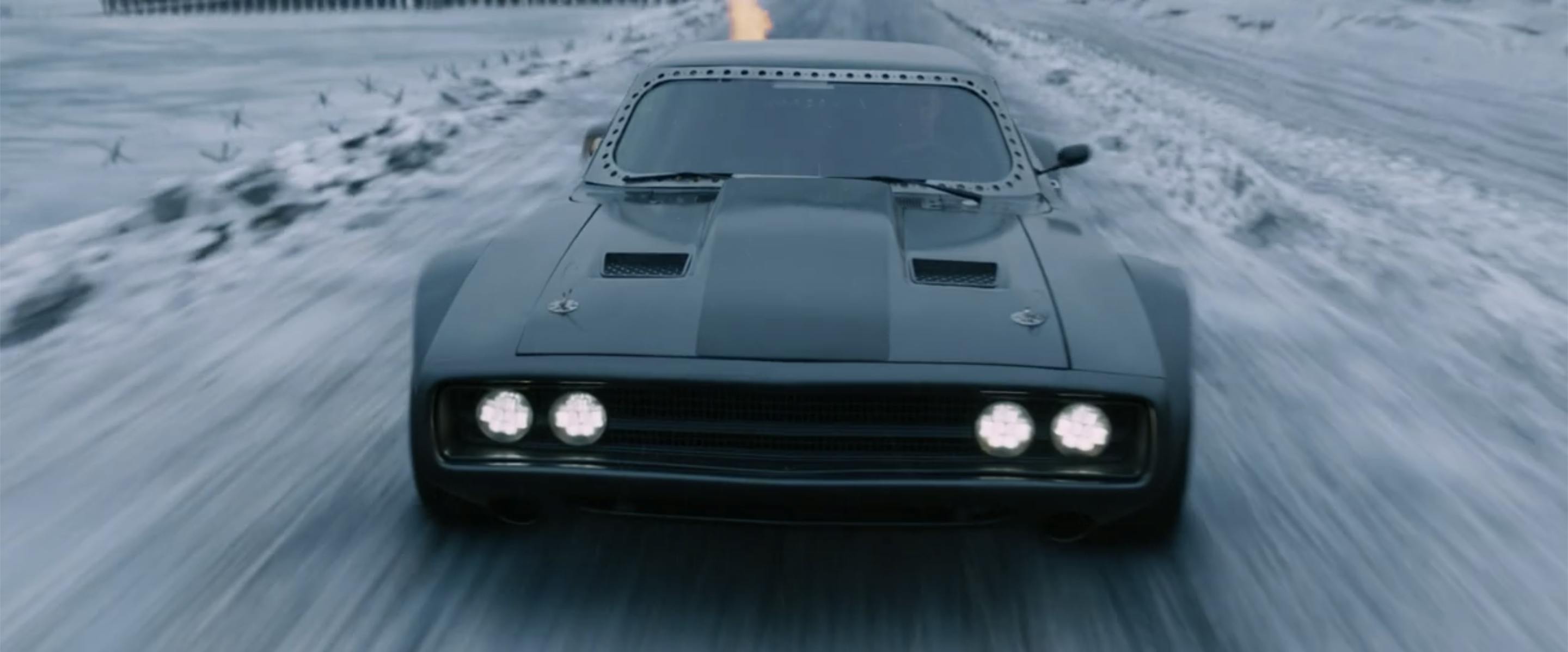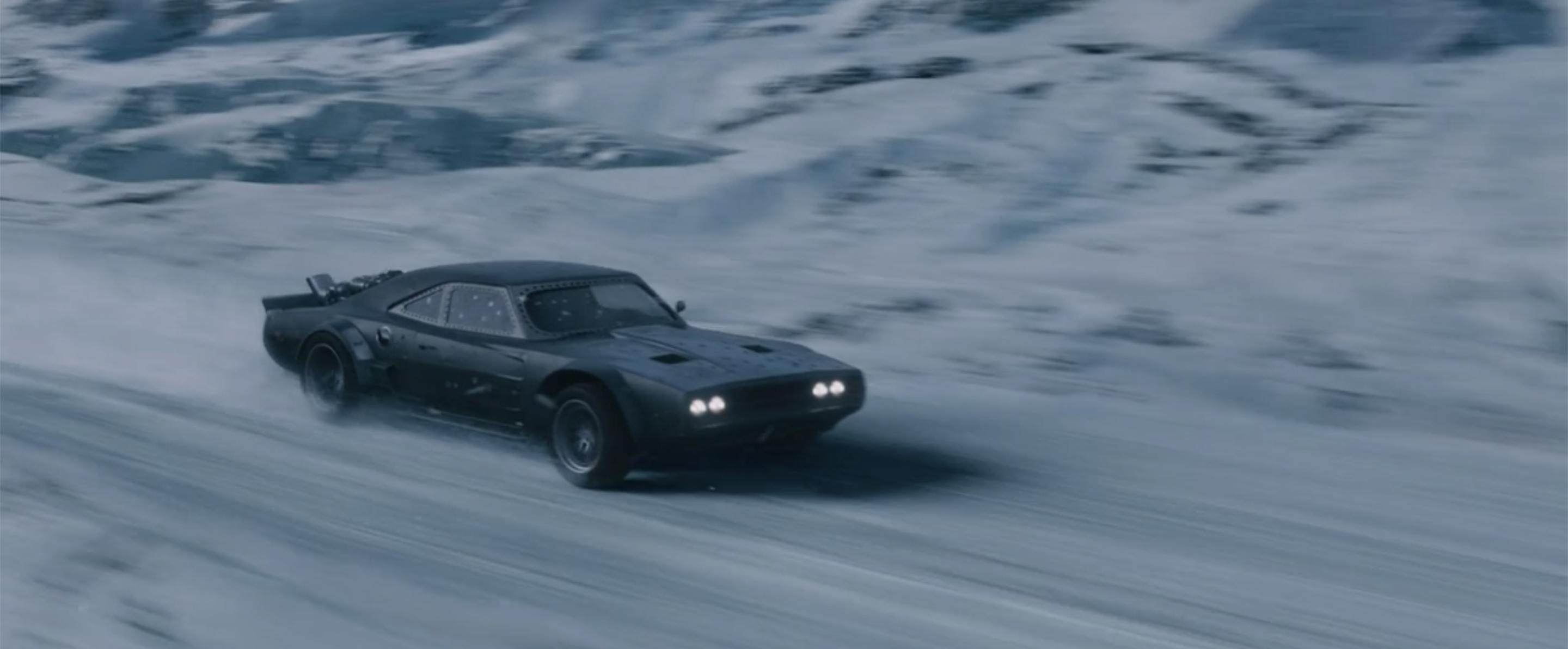Most furious? Dom Toretto’s Chargers are muscled maniacs
In its 20-year run, The Fast and the Furious saga has become an encapsulation of action film history. What began as a story of highwaymen and stagecoach robberies has evolved into the American James Bond. And it’s not just limited to American action, as the franchise has also embraced the international, casting action stars like Joe Taslim and Tony Jaa. Now nine movies deep, absolutely anything goes. like cars going to space or a sequence plotted by filmmaker Justin Lin’s nine-year-old child. At this point, Dom’s crew are essentially superheroes in a nitrous-soaked David and Goliath story: they are always the underdog, always pitted against a bigger, more formidable foe.
On top of that, Fast and Furious has become genre of its own making that leans heavily into themes of family and inclusivity. The bond between Brian O’Conner (Paul Walker) and Dominic Toretto (Vin Diesel) was founded on loyalty, a love of cars, and adrenaline. These films combine street-racing soap opera, family drama, buddy movie, and heist thriller—where the bad guys get to win. In any other movie Dom’s crew might be framed as villains. At the end of most heist films, the crew ends up in prison or dead. But there is heroism and romance in what Dom’s crew does; they are modern-day Robin Hoods who get to have the happy ending, ride away into the horizon. These movies are myth-making westerns, and its protagonists are outlaws. Folk heroes in tales that grow taller with every entry. In that context, Dom’s Charger is the wizened old war horse not quite ready to fade into memory.
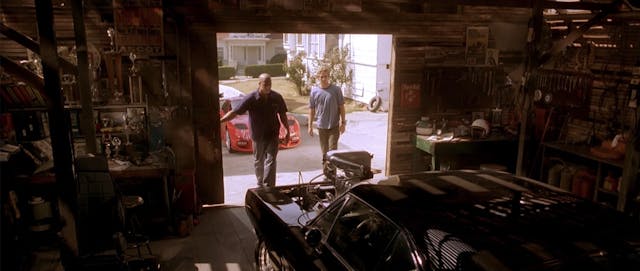
The Fast and Furious films exist in a beautiful world that revolves completely around cars. Through them, battles are won, problems are solved, and scores are settled, like duels. But they’re also how bonds are formed and nurtured. According to Han (Sung Kang), a car and how you handle it shows you who you are and “what a man’s made of.” And Dom and his Charger exemplify this; they are essential to the series and its lore. In The Fast and the Furious, Sergeant Tanner (Ted Levine) diagnoses Dom with “nitrous oxide in his blood and a gas tank for a brain.” American muscle is in his DNA, so it’s no surprise that Dom built his first Charger with his father.
Dom shares the Charger’s story with Brian in the first film: “Me and my dad built her. Nine hundred horses of Detroit muscle. It’s a beast. Know what she ran in Palmdale? Nine seconds flat. My dad was driving. So much torque, the chassis twisted coming off the line. Barely kept her on the track.” But he confesses that he’s never driven her because it scares him. His sister Mia (Jordana Brewster) thinks it’s cursed. But for Dom, it’s a kind of good luck charm, though the car itself isn’t always so lucky. It becomes an extension of Dom, his trademark. It’s a character unto itself.

Though he’s driven all kinds, the second-generation Charger is the perfect car for Dom. Its aerodynamic coke-bottle styling was inspired by old supersonic fighter jets. It is as gorgeous as it is menacing, an icon with a rich film history, from Bullitt to Blade. Basically, it’s a visual signifier for cool—and for speed. The Fast and the Furious introduces the original: a 1970 Dodge Charger R/T (with a few parts from a ’69 Charger). Production used one hero car, and at least three stunt cars. The engine featured in closeup in the film was borrowed from Chuck Taylor Racing Engines, and it wasn’t actually the engine that powered the car. According to technical advisor Craig Lieberman, it was a “1957-1958 392 cubic-inch Hemi that had been bored and stroked to 445 ci.” It was alcohol injected using mechanical fuel injection, with a Cragar intake manifold, a Mooneyham 6-71 supercharger, an Enderle 3-inch hat spacer, and an Enderle bug catcher. The stunt cars weren’t quite as exciting, though, and given standard Dodge engines and no real superchargers.
The end of the film sees Brian and Dom race each other once more, with Brian in his ’94 Toyota Supra Mark IV and Dom in his Charger. The race is a tie, and the men finish the film as equals. But the Supra was heavier, and it had less horsepower; with racing slicks and 900 hp, Lieberman says that, in reality, the Charger would’ve smoked the Supra.
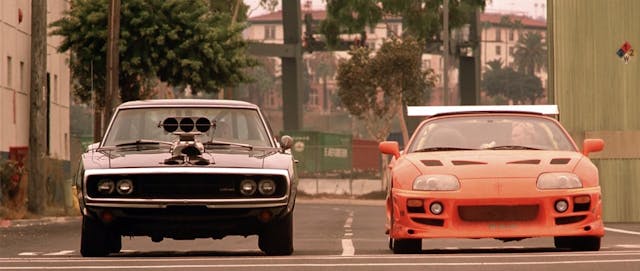
Though the Charger is wrecked during this race when Dom crashes into a truck, it’s far from the last time we see it. After Dom leaves Letty (Michelle Rodriguez) in the Dominican Republic to protect her from the authorities, Letty returns to Los Angeles alone and helps rebuild the crashed Charger. Mia explains it to Dom: “Letty wouldn’t let them junk it. [ . . . ] When she came back, she was always in here, working on it day and night. It was weird. It was like she knew you were coming back.” The relationships that the characters have with cars are emotional, fundamental to the story and to who these people are. More than once, Dom has used his car to catch Letty quite literally when she falls. Like Tej (Ludacris) explains to Hobbs (Dwayne Johnson) in Fast and Furious 6, the relationship we have with the cars we customize is a bond. But Letty’s tireless work to restore Dom’s Charger is more so a testament to her commitment to its owner than the car itself.
Throughout the movies, the Charger has become a bit like Mad Max’s Interceptor, a mythical ride that Dom drives, destroys, then resurrects for the next entry. The man has symbiotic relationship with his car, and he seems to have a Charger for every occasion. If he doesn’t have one on hand, they seem to find him. In Fast & Furious 6, Dom drives not one but two Chargers: a 2012 Dodge Charger SRT-8 during the climactic chase on the airstrip, and a 1969 Dodge Charger Daytona. Tej buys the Daytona during his auction shopping spree for their mission, and the SRT-8 was likely procured by Hobbs expressly for Dom.
Picture car coordinator Dennis McCarthy said he wanted the SRT-8 to look like something Hobbs had made for Dom in a government or military facility. They lowered the car, gave it a Mopar 20-inch wheel and a battleship-gray paint scheme. Though there are plenty of newer Chargers in the films, they just never feel right for the character in the way that the older ones do. The Daytona feels truer to Dom, a heightened, more vibrant version of what he usually drives. He races it against Letty when he finds her again after her memory loss, the perfect car to remind her who she is. It also happens to have “the aerodynamics to keep up with European supercars,” McCarthy explained, and it was modified to minimize the front-end weight: “We tucked the nose back in, we slammed the car to the ground. We just streamlined everything.”
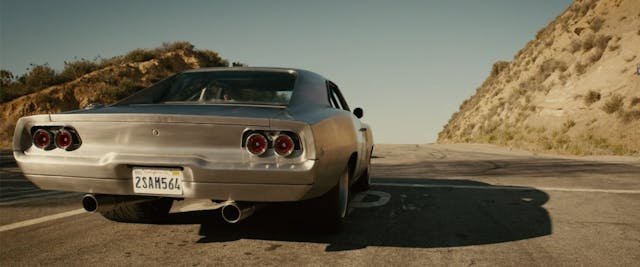
In Furious 7, Dom drives a ’68 Charger called the Maximus Charger, a beast powered by a turbocharged 572-cid all-aluminum Hemi courtesy of Nelson Racing Engines. It boasts nearly 3000 horsepower, and Dom harnesses it in the car he drives for his final race with Brian, an emotional goodbye that ends with them each driving away on two diverging roads. It’s a stripped-down car for a stripped-down, unguarded moment. Layers of clear coat and cover spray show off the Maximus Charger’s immaculate metalwork, giving the car an almost otherworldly glow. A machine straight from Toretto’s hot-rod heaven.
In the saga’s next entry The Fate of the Furious, Dom pursues a submarine in Russia in the Ice Charger, a ’68 Charger with a rear engine, specifically a 550 horsepower LS motor. Its design was inspired by Ken Block’s Hoonicorn, a custom-built ’65 Mustang notchback, and it’s modified to drive on ice: for example, its custom side-exit exhaust was intended to prevent hydroplaning. Dom destroyed the car when he used flame from its turbine to distract a heatseeking missile that was on its way to blow up his friends. As one of the cooler, more eye-catching cars in a series chock full of them, it was wrenching to see it go.
Dennis McCarthy felt the Ice Charger was “the best car build from the Fast franchise to date.” But the Ice Charger may just be surpassed by Dom’s next ride. F9, releasing on June 25, 2021, will see Dom in a ’68 mid-engine Charger modified by Speedkore, with widened rear fenders and lowered suspension. Lack of blower aside, it resembles his first Charger. And, by the looks of the trailer, it’s equipped with a giant magnet in the backseat, handy for repelling the cars chasing it and for creating all kinds of chaos. (Tyrese’s Rome speaks for the audience when he asks: “Man, we messing with magnets now?”)
At the opening of The Fate of the Furious, Letty and Dom talk to a young racer in Cuba about his car. “We swap in parts from Fords, Plymouths, and Cadillacs,” he tells them. “My grandfather bought it in 1957. When he died, it passed to my father. Then my brother, and now to me.” Dom notes that it has a boat engine in it, and the boy explains: “Whatever it takes to keep it running.” There’s an echo here of Dom’s relationship with his father and their Charger. These cars are more than just functional objects, they are sentimental, precious. They’re family heirlooms. The Charger is a memento of Dom’s father, it has rich emotional history. It represents an ironclad pledge—not just between Dom and the car itself but between Dom and his loved ones. Dom’s Charger is an ever-evolving tribute to loyalty, and to family.

